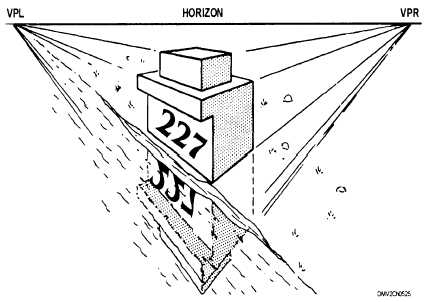Perspective Practices, Continued
Reflections,
shadows, and
shade in
perspective
Realistic perspective drawings drawn either mechanically or by freehand may
require the use of reflections, shadows, or shading.
REFLECTIONS: Reflections occur when you view an object on or near
glossy or shiny surfaces such as glass, polished metals, or water. Reflections
appear not as a scene in reverse, but as though you were below the scene
looking up. When drawing reflections, the station point and the horizon line
are the same as the ones used to initially draw the object. Horizontal widths
remain the same and project downward defining the width of the reflection.
Vertical height is the only dimension left to calculate. To define heights in a
reflection, revolve the object to reflect below a surface as far as it projects
above it. When the object is close to the horizon, the reflection is nearly a
duplicate of the original scene. When an object is set back from the horizon
line, the scene appears abbreviated.
Figure 5-25 illustrates how the horizon line, station point, and vanishing
points are the same for the object and the object in reflection.
Figure 5-25.—Reflections in perspective.
Continued on next page
5-33

